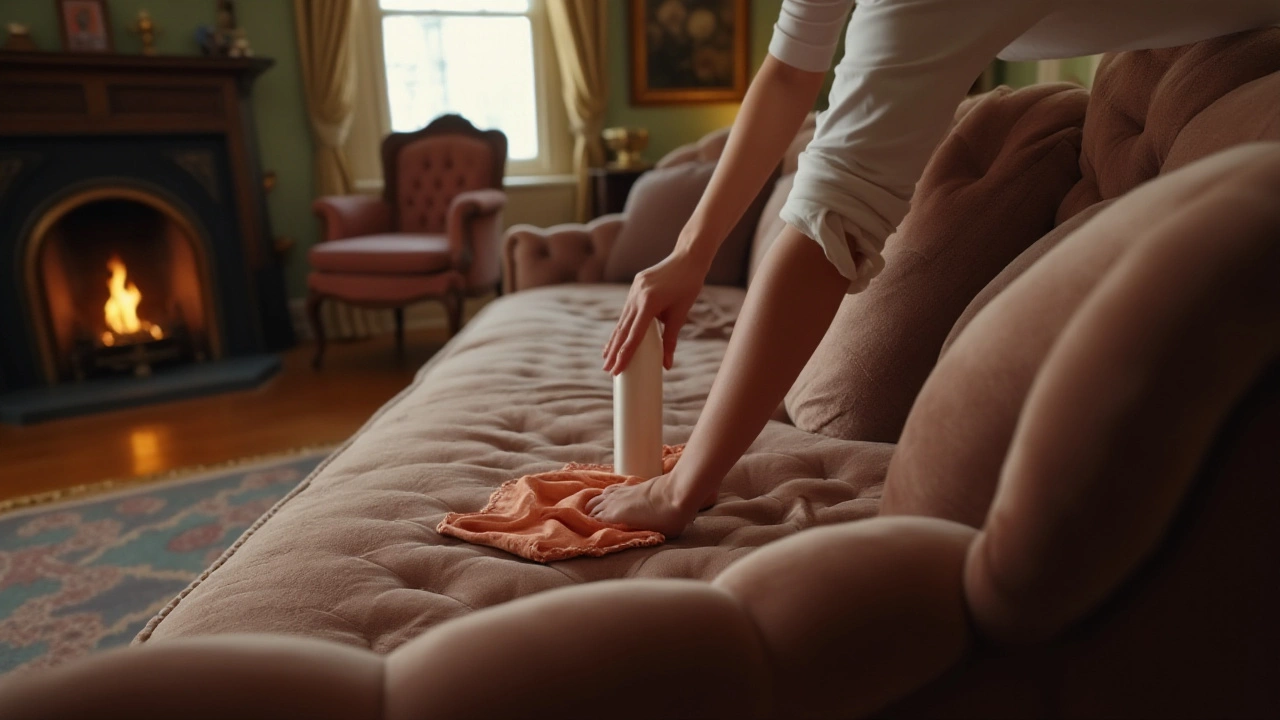Couch Cleaning: Simple Tips to Keep Your Sofa Spotless
Got a couch that looks a bit tired? You don’t need a pricey professional service. With a few everyday items and a little routine, you can make your sofa look like new again.
Everyday Cleaning Routine
First thing you should do is vacuum the whole surface. Use the brush attachment and go over the cushions, backrests, and armrests. This gets rid of dust, pet hair, and crumbs before they settle into the fabric.
Next, grab a clean microfiber cloth and a spray bottle filled with plain water. Lightly mist the cloth—not the couch—and wipe down the visible areas. The water helps lift surface grime without saturating the upholstery.
If your couch is made of leather, swap the water for a mix of equal parts water and white vinegar. Wipe gently, then dry with a soft towel. For fabric sofas, a tiny dash of mild dish soap in the water works well for a quick refresh.
Do this quick wipe‑down once a week. It prevents dirt from building up and makes deeper cleaning easier later on.
Tackling Tough Stains
Spills happen, so have a plan. For fresh liquids, blot—don’t rub—with a clean paper towel. Press down until the liquid is soaked up. Rubbing pushes the stain deeper into the fibers.
For wine, coffee, or juice, mix one cup of warm water with a tablespoon of baking soda. Apply the paste to the stain, let it sit for 10‑15 minutes, then gently scrub with a soft brush. Wipe off the residue with a damp cloth.
Greasy stains need a different approach. Sprinkle a little talc or baby powder on the spot and let it sit for 30 minutes. The powder absorbs the oil. Brush it away and follow with the baking‑soda paste if any color remains.
When a stain refuses to budge, test a commercial upholstery cleaner on an inconspicuous area first. If the color stays unchanged, spray the cleaner on a cloth and dab the stain, working from the edges toward the center.
After any deep cleaning, let the couch air dry completely before putting the cushions back. Opening windows or using a fan speeds up the process.
Finally, protect your couch with a washable slipcover or a fabric protector spray. A slipcover catches spills, and a protector adds a barrier that makes future cleaning faster.
Stick to this routine and you’ll keep your sofa looking fresh for years. No fancy tools, no massive expense—just a bit of time each week and the right tricks when accidents happen. Happy cleaning!

Challenging Couch Fabrics to Clean and Maintain
Cleaning couches can be a daunting task, especially when faced with materials that are notoriously difficult to maintain. This article delves into the intricacies of cleaning challenging couch fabrics, offering insights into why some materials resist upkeep more than others. Learn about effective techniques, common pitfalls, and tips for preserving your sofa’s appearance. Arm yourself with knowledge to tackle even the toughest stains and keep your furniture looking fresh.
Categories
- Storage (27)
- Bathroom (18)
- Sofas (15)
- Curtains (15)
- Home Decor (12)
- Bedding (11)
- Kitchenware (11)
- Cushions (11)
- Mirrors (10)
- Rugs (9)
Popular Articles



